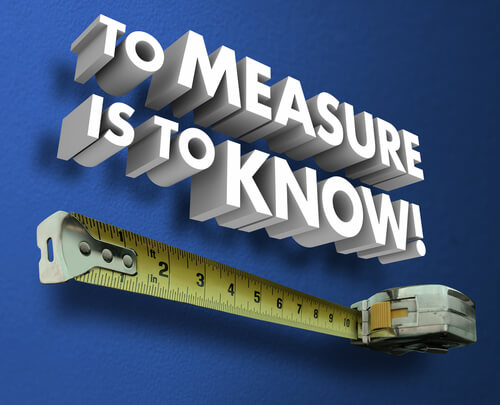 It only feels right to begin an article on measurement with a couple of statistics.
It only feels right to begin an article on measurement with a couple of statistics.
The Content Marketing Institute and MarketingProfs release a benchmarks report every year, which is always one of my favorites.
The most recent reports show that only 21 percent of B2B and 23 percent of B2C marketers indicate they are successful at tracking the ROI of their content marketing programs.
On top of that, only 38 percent of B2B and 37 percent of B2C marketers rate their use of content marketing as effective.
Companies are also reporting increased investment in content marketing, which is good, but when you can’t measure the effectiveness of a strategy, those budgets can easily get slashed.
There’s also confusion on what to measure when it comes to the effectiveness of your content marketing.
- Is it traffic?
- Is it sales?
- Is it subscriber growth?
- How about bounce rate?
- What about share metrics?
No wonder everyone is claiming blogging is dead!
Define Your Business Objectives
Before you identify any kind of metrics, you should be know what your business objectives are and define them clearly.
You’d be shocked at how many organizations run without there…and are successful in spite of themselves.
Imagine how much more successful they’d be with clearly defined business objectives.
Without them, your content will have nowhere to go.
It’s difficult to measure anything—including the effectiveness of your content—without defined goals.
Let’s Talk KPIs
While there’s not always a direct correlation between publishing a piece of content and sales, there are still key performance indicators to help you measure effectiveness.
These KPIs fall into four buckets:
- Consumption
- Sharing
- Lead generation
- Sales
It’s also important to remember measurement, when it comes to content marketing, is a continuum.
You have to give your content enough time to make a difference, and measure incremental success at different stages of your company’s sales cycle.
Remember, it all ladders up to your business objectives.
Of course, there are things you can measure in real time to help you gauge effectiveness and make tweaks to your content strategy.
For example, if you pay attention, you may see some content marketers doing A/B testing of their article titles in real time.
They may test headlines. They may test images. They may test different social media status updates to see which motivate readers to click.
But Let’s Get Back to Metrics
To measure the effectiveness of your content and create a baseline, start with Google Analytics.
- How is your content performing?
- What’s the bounce rate?
- Which keywords are leading to your content?
- Are your visitors exploring on your site?
- Where are your new audiences coming from?
All of these are key metrics to help you measure effectiveness of your content.
Once you’ve identified these metrics, it’s time to build your strategy with a focus on creating high quality, evergreen content around those keywords aligned with your business goals to help boost your website’s authority and visibility.
Consumption metrics are just the beginning and they should raise a number of other questions such as:
- Are the people consuming a specific piece of content coming back for more?
- Are they engaging in other behaviors on your site, such as signing up for your email newsletter or becoming a blog subscriber?
More Importantly, Are They Sharing It?
For content marketing, sharing metrics give insight into brand awareness and engagement.
These metrics may be the easiest to measure due to the nature of vanity metrics (likes, +1s, tweets, emails), but they’re also the most unpredictable.
Sure, there are studies around the most optimal time to share your content, whether or not you should include images, where to place your sharing buttons on your website, and so many more little nuances when it comes to social media.
In terms of effective strategy and execution, however, the most important thing is to create compelling, evergreen, educational content.
What About Lead Generation?
So your fantastic content is being consumed and shared all over the internet, but how effective is it in lead generation?
Lead generation metrics include form completion and downloads, email subscriptions, blog subscriptions, blog comments, and conversion rates.
The important thing to remember about lead generation metrics is you can’t immediately assign a dollar value to them.
An email subscriber doesn’t equal X amount of dollars, however, they do allow you to build a relationship with that prospective customer.
Does Content Actually Lead to Sales?
The short answer is yes.
The long answer is it takes time.
Does a single blog post lead to a conversion and a direct sale?
Rarely.
More often than not, it’s educational content developed over time leading to direct sales.
The most direct and effective way to make a sale from your content is through eCommerce.
However, most conversions will happen via email and social sharing, which is why it’s important to have unique tracking URLs built in to every piece of content so you can effectively track where the customer started.
- Did they start on a blog post?
- Did they come from Twitter?
- Did they receive a forwarded copy of your newsletter?
- Did they attend a webinar?
Unique URLs (which are ridiculously easy to create in Google URL Builder) will give you that kind of information easily and free-of-charge.
Measuring the effectiveness of content marketing can feel like tricky business, but it’s possible with realistic expectations.
Image credit: shutterstock